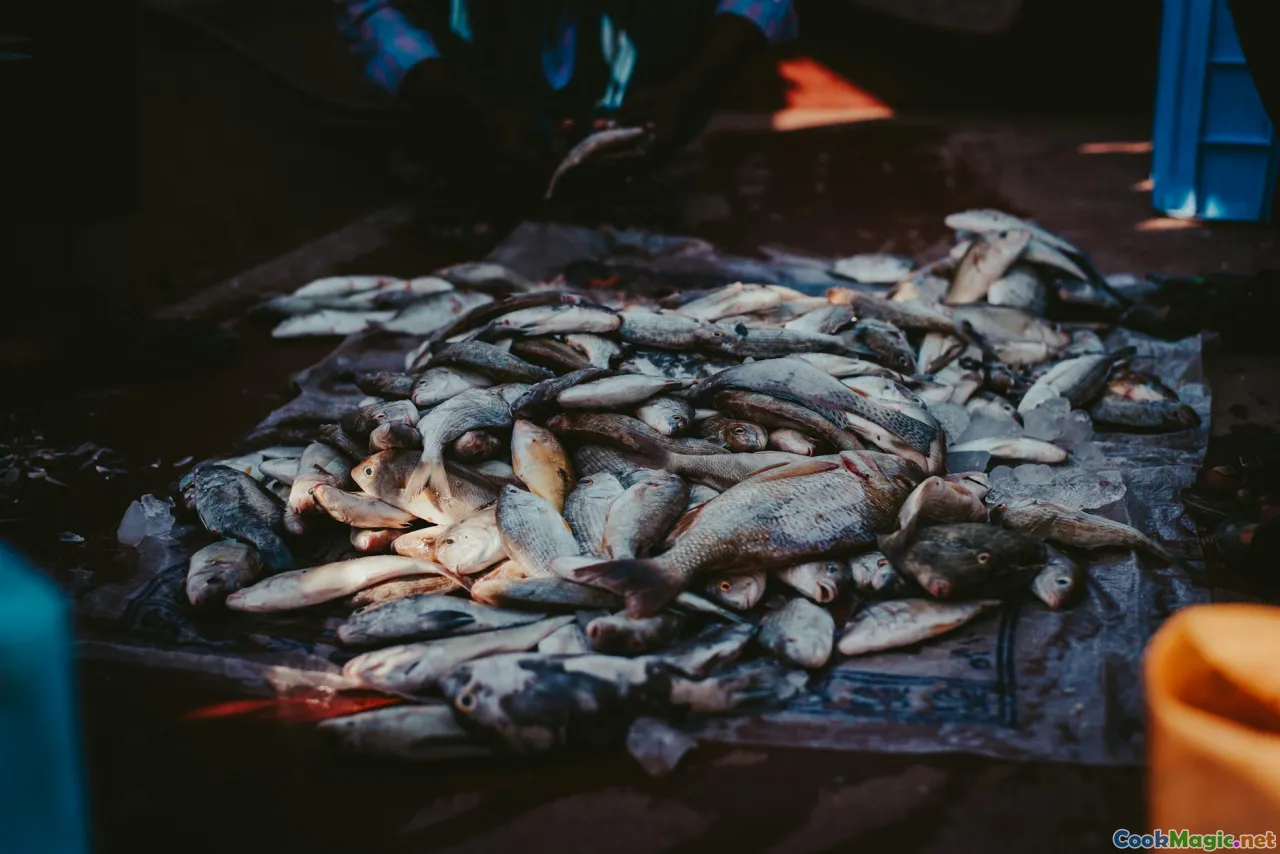Fish Preservation Methods in Senegalese Cuisine
10 min read Explore the vital methods used to preserve fish in Senegal, highlighting cultural practices and culinary innovations ensuring freshness and flavor. September 27, 2025 18:05
Fish Preservation Methods in Senegalese Cuisine
Walking through the vibrant coastal streets of Dakar or strolling along the bustling fishing harbors, one cannot help but be enchanted by the omnipresent aroma of freshly caught fish. From the lively markets in Saint-Louis to humble village docks along the Petite Côte, fish is more than a staple in Senegalese cuisine—it's a cultural heartbeat that sustains communities and defines regional identity. The secret behind the richness of Senegalese dishes, beyond the spices and herbs, lies in the age-old methods of fish preservation that have been passed down through generations.
In this journey into Senegal’s culinary soul, we explore how pre-colonial ingenuity, environmental factors, and soulful traditions converge to create a vibrant tapestry of preservation techniques—each with its own flavor, purpose, and story. These methods do not merely extend shelf life; they embody resilience, community, and a deep connection to the land and sea.
Traditional Fish Preservation: From Fermentation to Sun-Drying

Old Senegalese recipes flourish because of resourcefulness rooted in necessity. Before the advent of modern refrigeration, communities relied on a series of meticulous preservation techniques tailored to their climate and cultural preferences.
Fermentation: The Soulful Aroma of Soumb (Fermented Fish)
Fermentation has long been embraced in Senegalese kitchens, especially in the form of soumb—a pungent, intensely flavored fermented fish that serves as a foundation for many stews, sauces, and condiments. Typically made from small fish like sardines or mackerel, the fish are cleaned and packed into large ceramic or wooden vessels layered with salt.
As the fish ferment, enzymes transform their texture and flavor, developing complex umami notes that deepen with age. The resulting soumb exudes a powerful, savory aroma— fragrant yet earthy—that infuses dishes with depth. A dollop of soumb stirred into a spicy thieboudienne (the national dish combining fish, rice, and vegetables) imparts a tangy, fermented richness that awakens the palate.
Sun-Drying: Strategic Preservation in the Sun
In the sun-soaked regions of West Africa, sun-drying remains a practical and popular method. Fresh fish are cleaned, salted, and laid out on woven mats or racks, basking under the intense Sahelian sun until their flesh loses moisture and hardens.
The sun’s natural dehydration not only preserves the fish but also gives it a distinct texture—chewy yet leathery—that adds a pleasing bite to traditional dishes. These dried fish, known as kembéorkléb, are often stored in communal granaries and swapped between families, forming an intangible fabric of community sharing.
The aromatic scent of drying fish, carried by warm breezes, pervades local markets and is a testament to the patience and resilience intrinsic to Senegalese life.
Modern Innovations and Adaptations

While age-old methods hold cultural ground, modern Senegalese fishmongers and households also incorporate contemporary techniques that enhance safety and convenience.
Refrigeration and Freezing
The widespread adoption of refrigeration has revolutionized fish preservation, especially in coastal cities. Modern refrigerators and freezers allow for the storage of fresh or packaged fish—like tilapia, grouper, and snapper—for days or weeks. This shift has helped stabilize the fish supply chain, ensuring year-round availability.
However, this convenience does not diminish traditional methods. Many households still prefer sun-dried or fermented fish for specific dishes, preserving the classic flavors.
Vacuum Sealing and Cold Storage
For export markets and larger commercial operations, vacuum-sealing fresh fish and storing them in cold storage facilities ensures hygiene, longevity, and taste retention. This method complements artisanal techniques, allowing Senegalese fishermen to reach international markets without compromising flavor.
—
Cultural Significance and Everyday Life

Fish preservation techniques are deeply woven into the social and cultural fabric of Senegalese life. Markets such as Sandaga or Soumbambaye are sensory delights: vendors call out, offering freshly dried kembé or bubbling jars of soumb—each telling a story of tradition.
Community and Identity
Preserved fish, whether fermented or dried, serve as staples during major festivals and rituals. For example, during Tabaski, dried fish is prominently featured in shared meals, symbolizing abundance and communal harmony. The act of trading dried or fermented fish strengthens social bonds that have persisted for centuries.
Culinary Heritage: Dishes That Celebrate Preservation
Many iconic Senegalese dishes showcase preserved fish at their core. Thieboudienne, the beloved national dish, often features dried fish or soumb-infused flavors, while sma (a spicy fish stew) sometimes relies on preserved tagement or gari (fermented millet or corn paste).
Street stalls turn dried fish into a snack—crispy, salted, and packed with flavor—offering a taste of history to passersby.
—
Practical Tips for Aspiring Enthusiasts

For culinary explorers eager to bring authentic Senegalese flavors into their kitchens, here are some insights:
- Choosing the right preserved fish: Look for vibrant, well-dried kembé that isn’t overly brittle or oily. Freshly fermented soumb should emit a potent aroma—trust your nose.
- Rehydrating dried fish: Soak dried fish in warm water before cooking to remove excess salt and soften texture.
- Using fermented fish thoughtfully: A small amount goes a long way—add early in the cooking process to build layers of umami.
- Balancing flavors: Because preserved fish can be intense, balance with fresh ingredients like tomatoes, citrus, or sweet vegetables.
- Sourcing: Seek out reputable African markets or specialty importers for authentic products.
Sample Recipe: Senegalese Fish Stew with Preserved Fish
Ingredients:
- 200g dried kembé
- 1 onion, chopped
- 2 tomatoes, pureed
- 2 garlic cloves, minced
- 1 teaspoon smoked paprika
- 1 scotch bonnet pepper, diced
- 2 cups fish stock
- Salt and pepper to taste
- Fresh coriander for garnish
Preparation:
- Soak dried kembé in warm water for 30 minutes, then drain.
- Sauté onion and garlic until translucent.
- Add pureed tomatoes, paprika, and scotch bonnet—cook until fragrant.
- Pour in fish stock, bring to simmer.
- Add soaked fish, simmer gently to absorb flavors.
- Adjust seasoning, garnish with coriander, and serve with rice.
This dish embodies the essence of Senegalese preservation—deep flavors, hearty textures, and a cultural echo of the sea.
In all, the art of fish preservation in Senegalese cuisine is more than technique—it’s an ode to ingenuity, history, and community resilience. These methods preserve taste, tradition, and identity, ensuring that the soulful flavors of Senegal's coast continue to inspire generations. Whether through sun-dried simplicity or fermented depth, each bite connects us to the spirited rhythm of Senegal’s vibrant cultural tapestry, where the sea’s bounty is celebrated with reverence and delicious ingenuity.









